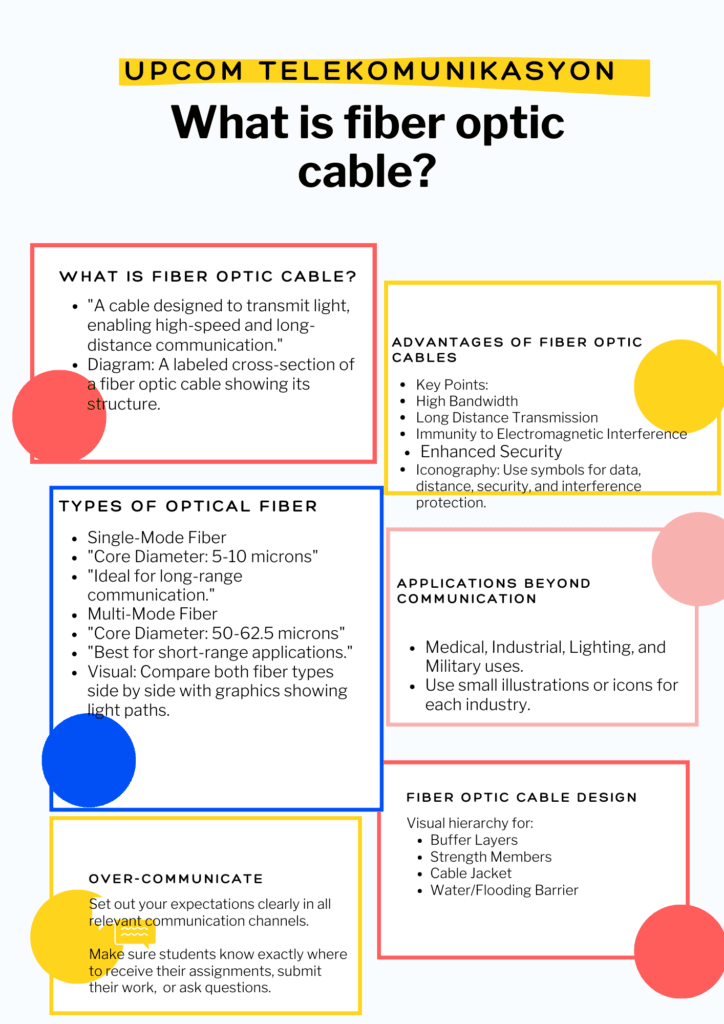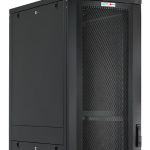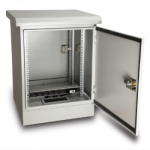09 Jan What is fiber optic cable
Fiber optic cables are an innovative communication medium that transmit data using light instead of electrical signals. Designed for efficiency and speed, these cables leverage thin strands of glass or plastic fibers bundled within a protective casing. The question; What is fiber optic cable? can be answered succinctly: it is the backbone of modern data transfer, offering unparalleled bandwidth and reliability for applications ranging from internet connectivity to industrial and medical solutions.
The History of Fiber Optic Cables
Fiber optic technology has its roots in the mid-20th century but gained significant commercial adoption in 1977. Explore the detailed history of fiber optics
It marked a transformation in long-distance, high-bandwidth communications, replacing traditional copper cables. The basic structure of a fiber optic cable includes:
- Outer Jacket: Protects against environmental damage.
- Plastic Coverings: Encases and shields bundled fibers.
- Core and Cladding: Core transmits light, while cladding ensures light stays confined.
Advantages of Fiber Optic Cables
- High Bandwidth: Capable of transmitting vast amounts of data.
- Long Distance Transmission: Minimal signal loss over kilometers.
- Immunity to Electromagnetic Interference (EMI): Ideal for environments with high electrical noise.
- Enhanced Security: Difficult to tap into without being detected.
What is Optical Fiber?
Optical fiber refers to a flexible, transparent medium made by drawing glass or plastic into thin strands. Each strand is slightly thicker than a human hair and enables the transmission of light signals. Light, confined within the core, carries data in the form of digital pulses.
Key Components:
- Core: Carries the light signals.
- Cladding: Reflects light back into the core.
Coating: Protects against moisture and damage.
Types of Optical Fiber
Single-Mode Fiber
- Core Diameter: 5-10 microns.
- Light Transmission: Light travels in a single path, reducing dispersion.
- Applications: Telecommunications, CATV, and Internet backbones.
- Advantages: High speed and long-range transmission (up to 100 km).
Compare single-mode and multi-mode fibers.
Multi-Mode Fiber
- Core Diameter: Typically 50-62.5 microns.
- Light Transmission: Multiple modes or paths, leading to dispersion.
- Applications: Local Area Networks (LANs), short-distance data links.
- Advantages: Economical for short-range applications.
Applications Beyond Communication
Fiber optics extend their utility into non-telecommunication fields, such as:
- Medical Industry: Endoscopic devices for minimally invasive surgeries.
- Industrial Applications: Fiberscopes for inspecting engines and pipelines.
- Lighting and Decorations: Used in smart lighting and aesthetic designs.
- Military and Aerospace: Secure communication and advanced weapon systems.
Fiber Optic Cable Design
Fiber optic cables are tailored to withstand diverse environments. A standard cable consists of the following:
1. Buffer Layers
Protects optical fibers from external forces and stresses. Types include:
- Loose Tube: Rugged and filled with gel for outdoor use.
- Tight Buffer: Compact and suited for indoor applications.
2. Strength Members
Provide tensile strength and enhance durability. Examples:
- Aramid Yarn (Kevlar): Commonly used for its lightweight and robust properties.
- Steel Strands: Adds flexibility and structural integrity.
3. Cable Jacket
The outer jacket ensures the cable withstands environmental challenges. Options include:
- Polyethylene (PE): UV resistant and durable.
- Polyvinyl Chloride (PVC): Flame retardant.
- Low Smoke Zero Halogen (LSZH): Suitable for public areas.
4. Water/Flooding Barrier
Essential for outdoor and underground cables:
- Moisture-Resistant Coatings: Such as silicone rubber.
- Metallic Barriers: Axial aluminum foils block water ingress.
Innovations in Fiber Optics
Fiber optic technology continues to evolve. Key advancements include:
- Wavelength Division Multiplexing (WDM): Enables multiple signals on a single fiber.
- Bend-Insensitive Fibers: Minimizes signal loss in tight installations.
Plastic Optical Fibers (POF): Cost-effective solutions for short-range applications.
What is fiber optic cable?
Construction Products Regulation (CPR) for Cables
CPR for cables (Construction Products Regulation) for cables became a legal requirement in July 2017. CPR for fiber optic cables is having an intended use for permanent installation in buildings and c...
No comment 0 LikesOptical Fiber
What is optical fiber? We are used to the concept of moving knowledge in numerous ways. A wire cable transports the sounds from our speech into a socket on the wall and is borne by another cabl...
No comment 8 Likes19″ Rack Cabinet
What is a 19” Free Standing Rack Cabinet? 19” free standing rack cabinets provide a robust, cost-effective enclosure solution. PDU mounting or connectivity on both the front and rear of the cabinet. T...
No comment 0 Likes5 Fan Facts About the Fiber Optic Cables
Fiber optic cables are a type of cable that use glass or plastic fibers to transmit data. Here are some interesting facts about fiber optic cables: Speed: Fiber optic cables are capable of transmittin...
No comment 4 LikesWhat is fiber optic cable
Fiber optic cables are an innovative communication medium that transmit data using light instead of electrical signals. Designed for efficiency and speed, these cables leverage thin strands of glass o...
No comment 4 LikesHow Much Does Fiber Optic Cable Installation Cost in 2025?
Fiber Optic Cable Installation Cost | Reduce Costs with Cable Blowing Machines – UPCOM How Much Does Fiber Optic Cable Installation Cost? Updated guide for telecom and infrastructure professionals (20...
No comment 4 LikesIP55 Outdoor Cabinet
We found out that there is no enough information about 19” IP55 Outdoor Cabinet and thus we will investigate it. If you are reading this article, then you are probably planning to make a procurement s...
No comment 3 LikesFTTH installation Technologies
FTTH installation technologies Table of Contents Innovative approach to FTTH installation Technologies…1 Infrastructure Sharing…2 Duct sharing in France…2.1 Sewer pipes…2.2 Cle...
No comment 1 LikeCable Blowing by Pressurized Air / Fiber Optic Cable Blowing Procedure
Cable Blowing (Sometime called air assisted cable blowing, Cable Blowing by Pressurized Air, air blowing, jetting and all these words are describing method of cable blowing with pressurized air) Cabl...
No comment 1 LikeWhat Distributors Should Know Before Importing Fiber Optic Products: A Technical & Manufacturer-Level Guide
A technical guide for distributors importing fiber optic products, covering manufacturer-level engineering standards, CPR compliance, blowing performance and key quality checks....
No comment 0 Likes











